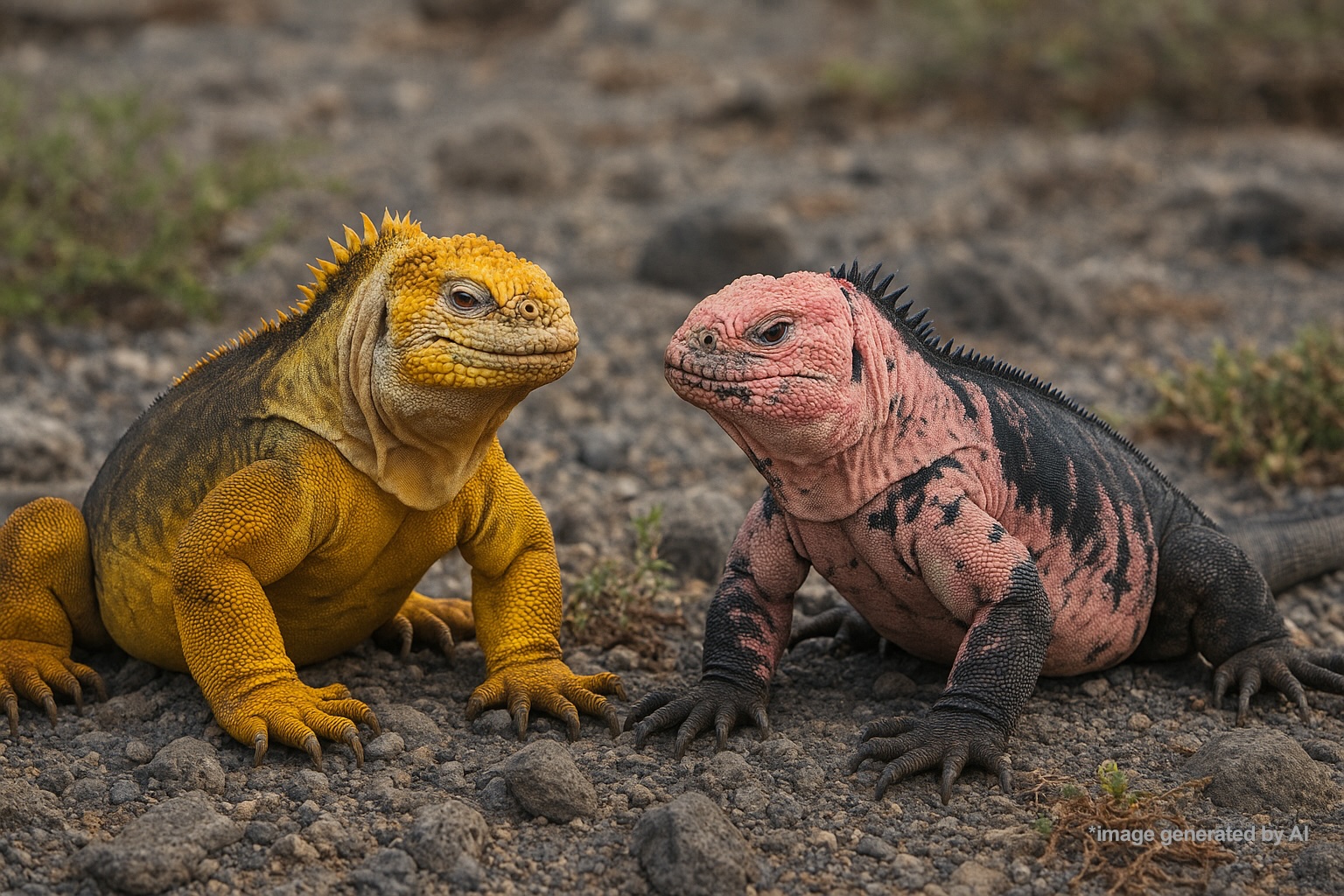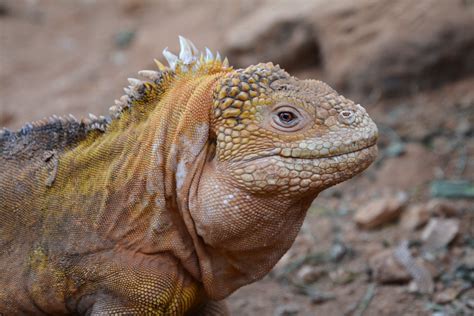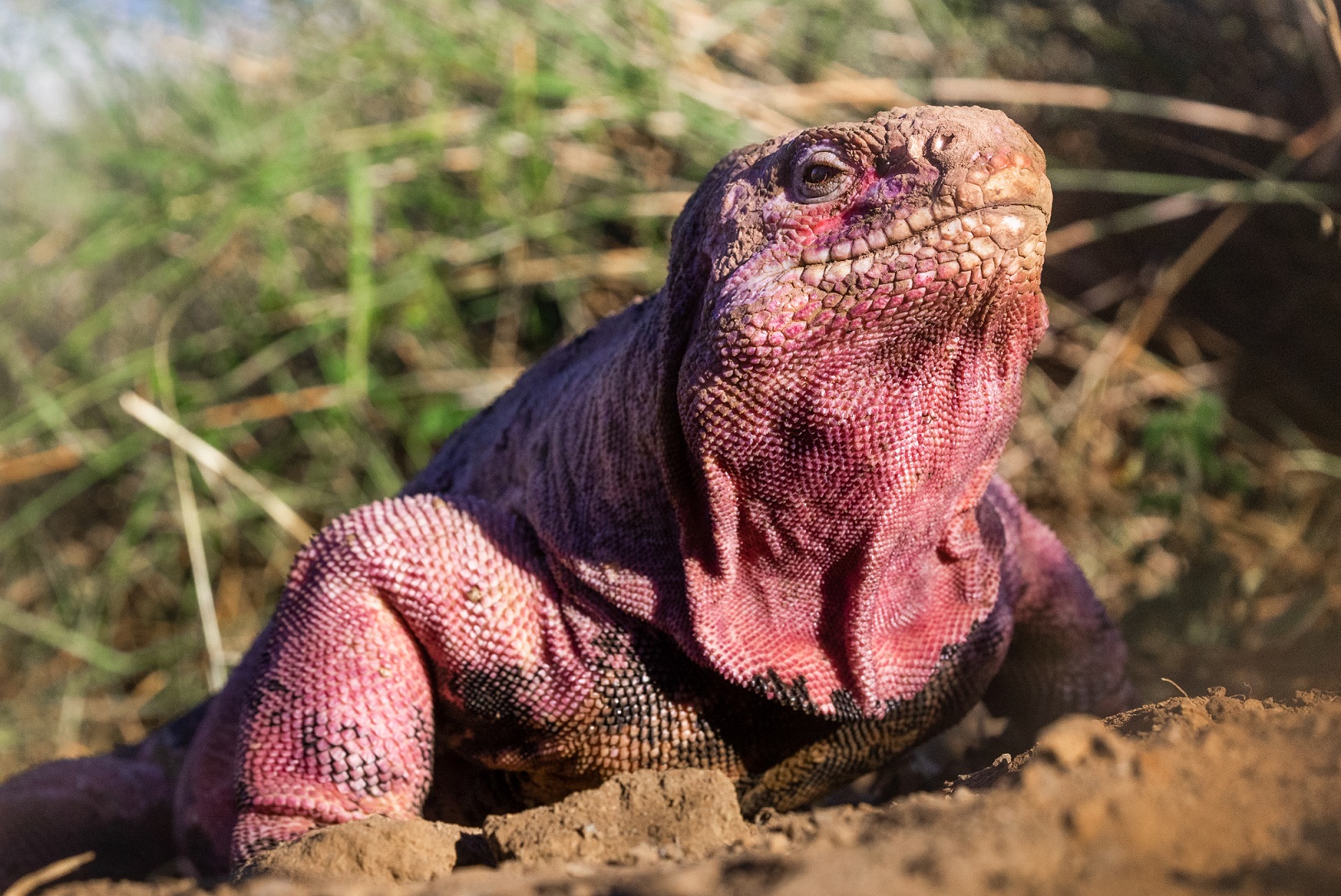
The Galápagos Islands are home to some of the most fascinating creatures on Earth—many of which exist nowhere else. Among them are two eye-catching reptilian residents: the Galápagos Land Iguana and its elusive cousin, the Galápagos Pink Land Iguana. These prehistoric-looking lizards are symbols of the islands’ unique evolutionary journey, and while they may share a name and habitat, they tell two very different stories of survival.
The Galápagos Land Iguana: Yellow, Hardy, and Iconic

The Galápagos Land Iguana (Conolophus subcristatus) is the more common of the two species. It’s hard to miss with its golden-yellow body, spiky dorsal crest, and powerful limbs. These iguanas can grow over 3 feet long and weigh up to 30 pounds. They mostly inhabit the arid islands of the archipelago, such as North Seymour, South Plaza, Isabela, and Fernandina.
A Cactus-Lover’s Diet
These iguanas are primarily herbivores and have a particular fondness for prickly pear cactus—spines and all. The cactus provides both food and moisture in the dry climate. They’ve adapted well to the island’s harsh conditions, basking on sun-heated rocks and digging burrows to stay cool.
A Conservation Comeback
Like many Galápagos species, land iguanas faced severe population declines due to introduced predators like rats, dogs, and cats. Thanks to conservation efforts by the Charles Darwin Research Station and the Galápagos National Park, many populations have stabilized. In fact, in 2019, land iguanas were reintroduced to Santiago Island after nearly two centuries of local extinction—marking a hopeful chapter in their recovery.
The Galápagos Pink Land Iguana: A Species Hidden in Plain Sight

Now for the showstopper: the Galápagos Pink Land Iguana (Conolophus marthae). With its bubblegum-pink scales outlined in black, this iguana looks like something from a science fiction film. But it’s very real—and very endangered.
Only One Home
Discovered as a distinct species in 2009, the pink land iguana is found only on the northwestern slopes of Wolf Volcano on Isabela Island. That’s it. This narrow range—less than 10 square miles—makes it one of the rarest reptiles on Earth.
Ancient and Isolated
Genetic studies show that the pink iguana split from other land iguanas over 5 million years ago, making it the oldest living species of land iguana. It’s more primitive in some ways, with a unique skull shape and DNA structure that marks it as an evolutionary relic.
A Race Against Time
Fewer than 300 individuals are estimated to exist. With threats like volcanic eruptions, climate change, and invasive predators, their future is uncertain. Scientists are working hard to monitor and protect their fragile population—but access to their habitat is difficult, and conservation action is urgent.
Why These Iguanas Matter
These land iguanas aren’t just charismatic reptiles. They’re living examples of how species evolve in isolation, adapt to extreme environments, and face modern challenges. Their stories underscore why the Galápagos Islands are a global treasure—and why continued conservation efforts matter.
Whether golden and widespread or pink and rare, the Galápagos land iguanas are reminders of Earth’s wild creativity—and our responsibility to protect it.
Did You Know?
- Charles Darwin described the land iguanas as “ugly animals” but also noted how “impressive” they were in their ecological roles.
- Pink land iguanas weren’t recognized as a separate species until the 21st century—despite being spotted as early as 1986.
Explore More:
- Dive into the world of marine iguanas—their ocean-going cousins
- Meet more island species: from blue-footed boobies to giant tortoises
- What’s the difference between the Galápagos Fur Seal vs. Galápagos Sea Lion?
More photos below ↓




















Disclaimer: This blog post is for edutainment purposes only and may not be entirely accurate.






